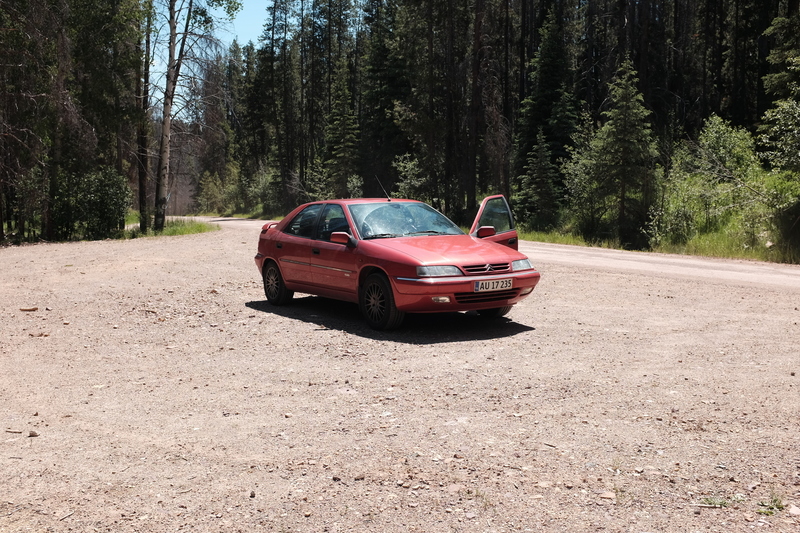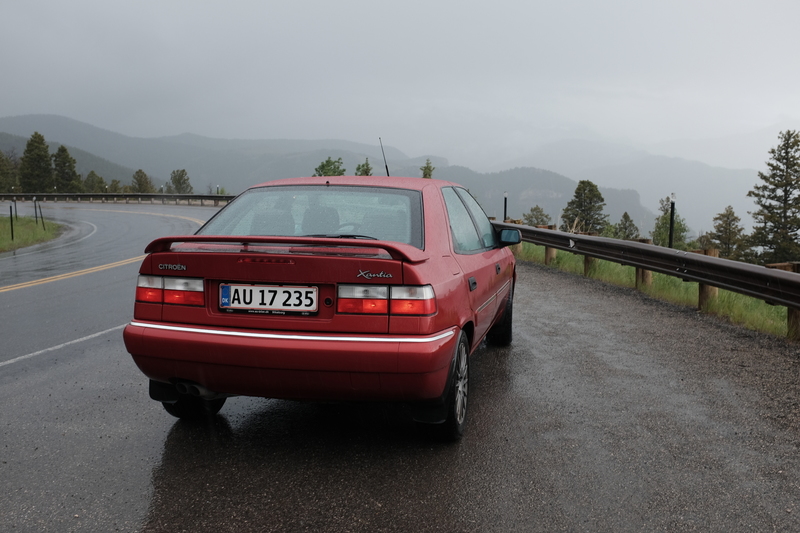Let us talk about the car
27 June 2017
To me, there are two main aspects to a road trip: The route itself and with those you travel. You may wonder about the last aspect, considering I am alone on this trip. (I do not have a partner, much less one with whom to do this.)
But I am not alone. This is a trip, on which both me and my car is. I am together with my car. So let us talk about my travel partner, and in particularly what makes it special to me.
The Citroën Xantia Activa V6 is definitely a future classic. In a sense, this car actually ought to be in a museum. But truthfully, it deserves to be driven.
Mine is from 1998, which is the second of the three years this particular variant was made. Only a total of 2,700 Activa V6s were built. So to begin with, the car is already rather rare.
Like a proper large Citroën, [1] it has hydropneumatic suspension, which means the car runs on mineral oil and gas spheres under high pressure, rather than coils or springs. The end result is a suspension that can react almost instantiously to unevenness in the road, thus creating an incredibly comfortable ride, even over very rough terrain.
You may point out, that Mercedes have an electronic suspension that reads the road and prepares the shock absorbers accordingly. But that suspension was introduced on the S-Class in around 2008. Not only is Citroën's suspension from 1954, it was also available on cars that were compareably much cheaper than the equilivant of an S-Class at the day.
If you want a more true comparison, consider what a Xantia cost in the 1990s compared to an S-Class of the same time. Sure, an S-Class had more features, but the suspension was almost similar, because Mercedes actually used a slightly modified version of Citroën's suspension for several decades.
The Activa portion is an addition to the regular hydropneumatic suspension, which adds anti-body roll arms to the wheels. While the hydropneumatic suspension already kept the Citroëns very secure and stable, as the wheels would cling to the road, they would still do quite a bit of body roll in corners. The Activa variants do not. There is no body roll.
The Activa variant was previously available with smaller engines, but with the ES9 V6 engine, the variant finally achieved what it should have been. The end result is a car that feels like a scaled up go-kart, while at the same time maintaining a significantly comfortable ride quality, even in the corners. Plus the car is based on a standard French family car, so it is also very practical.
This is why this car is perfect for this trip. It is excellent on motorways and it is excellent on twisty country roads. And remains practical all the way through.
Notes
| [1] | I say 'large Citroën', because I also consider the 2CV, Ami 6 and Méhari proper Citroëns, they were just too small for the suspension. Additionally, the Traction Avant is also definitely a proper Citroën, but the suspension just had not been invented until the very end of its production. |

